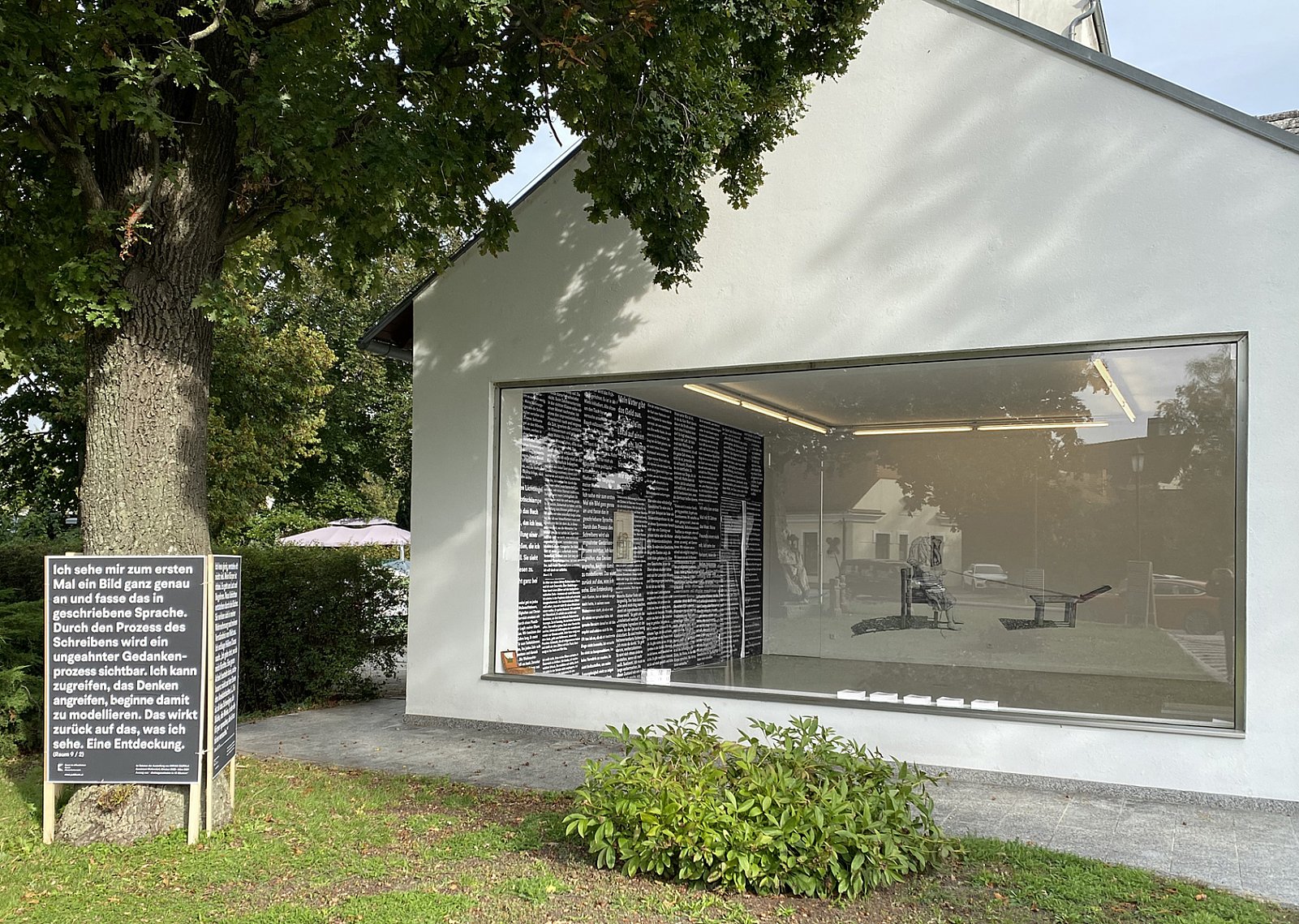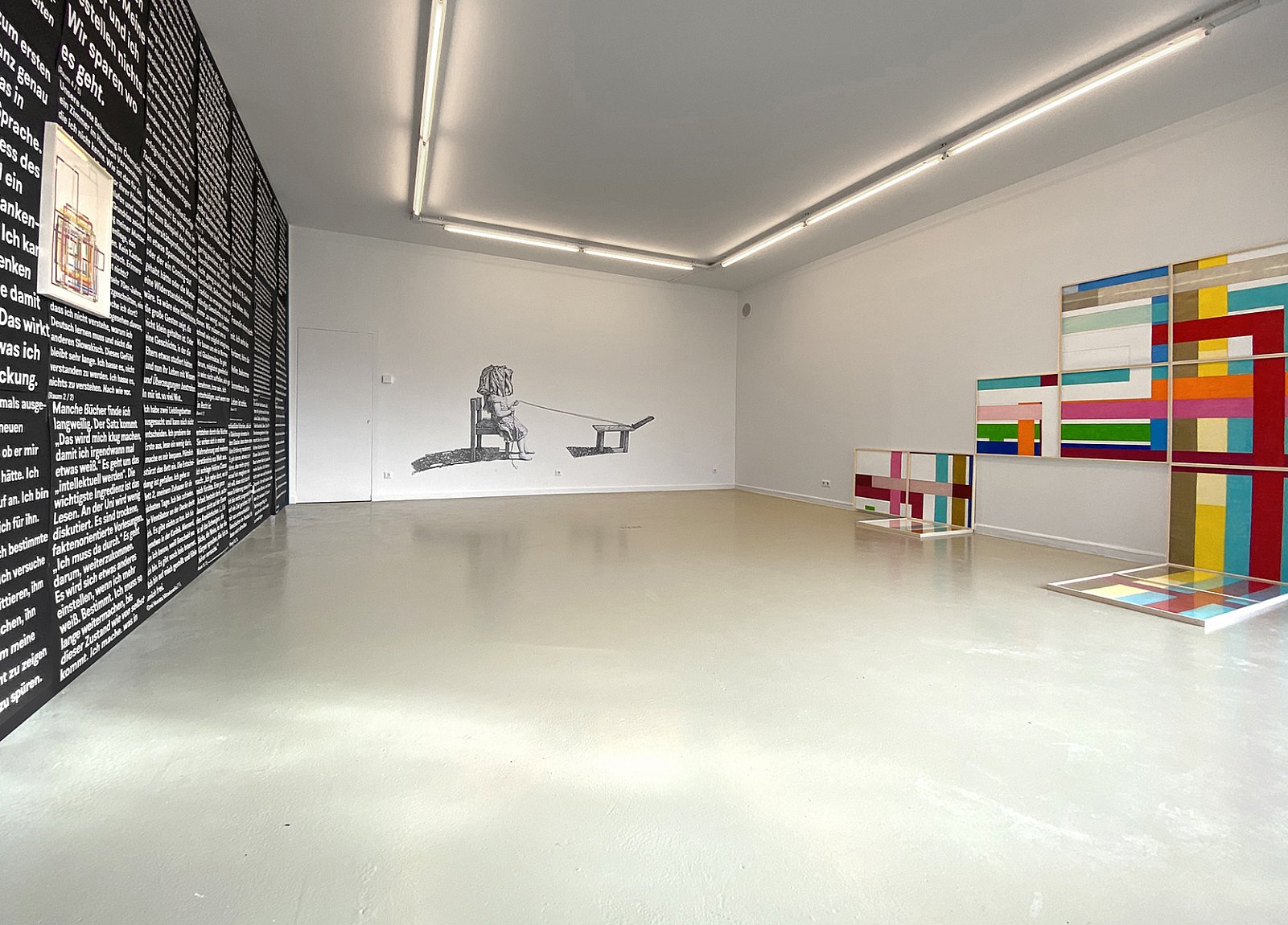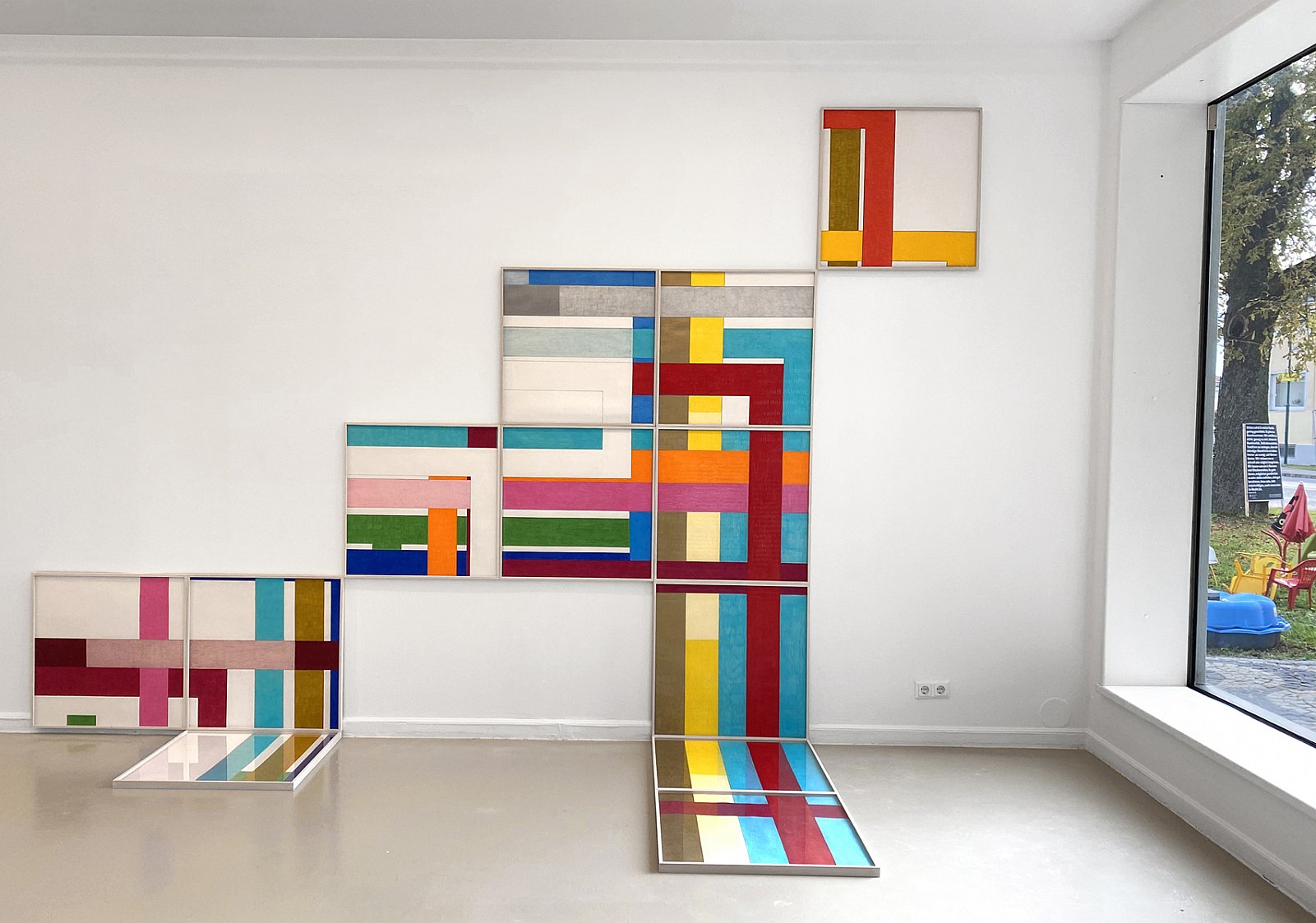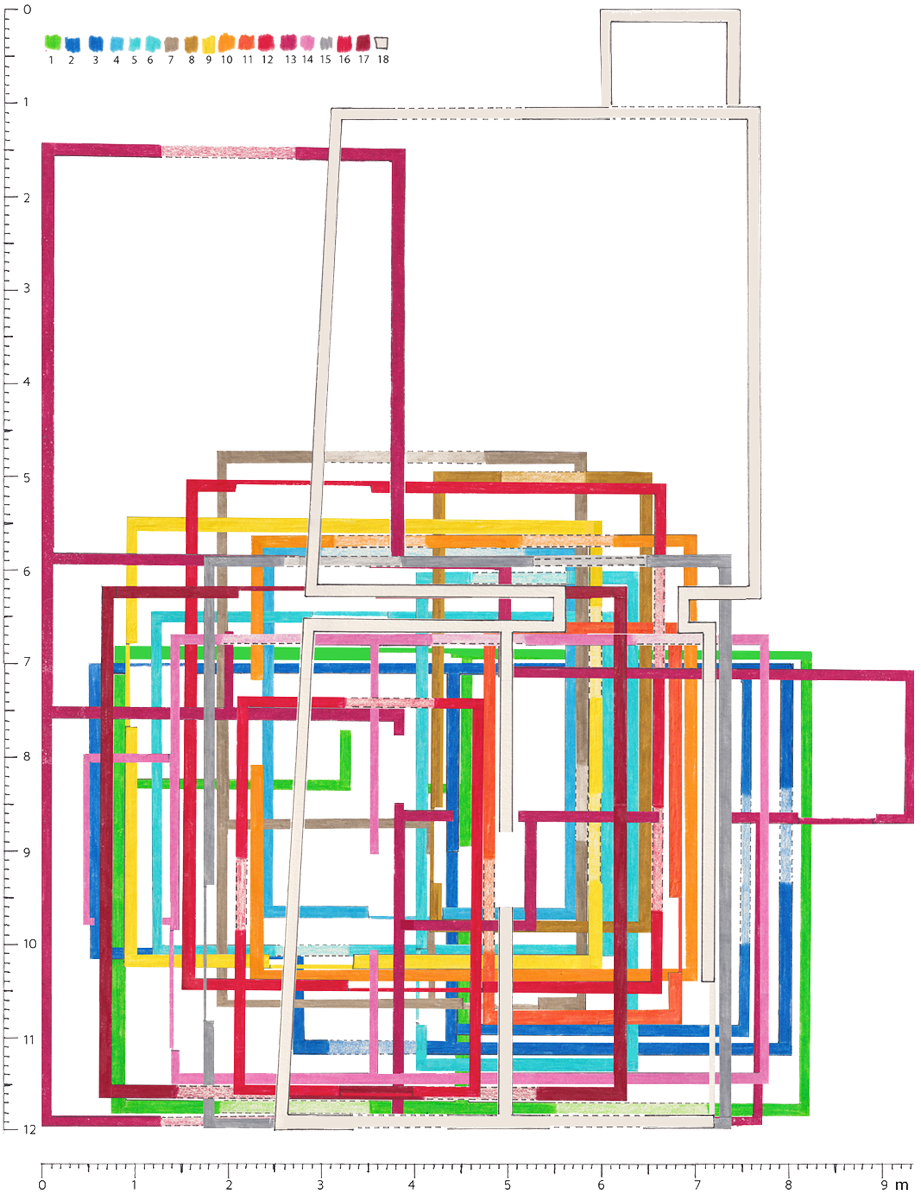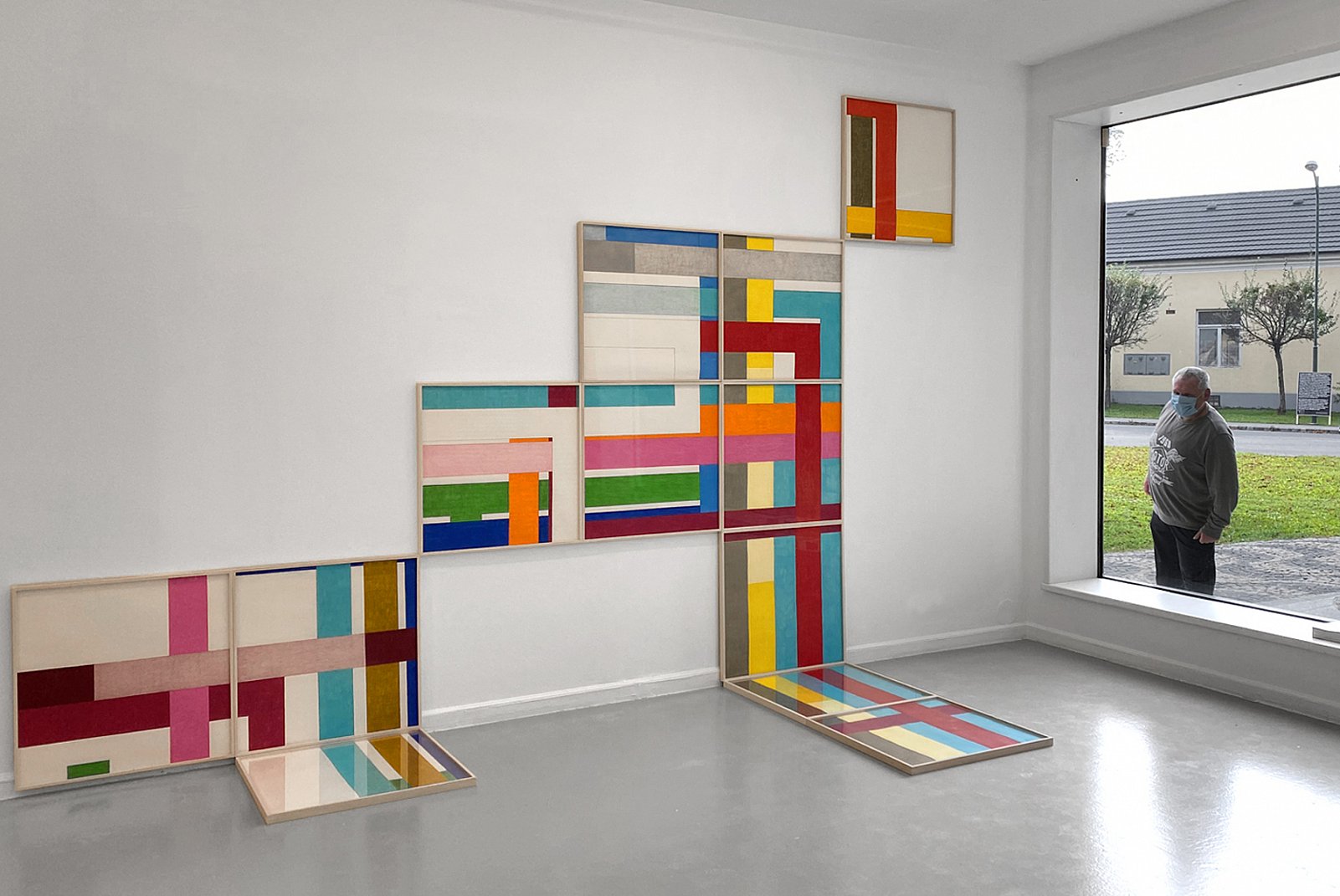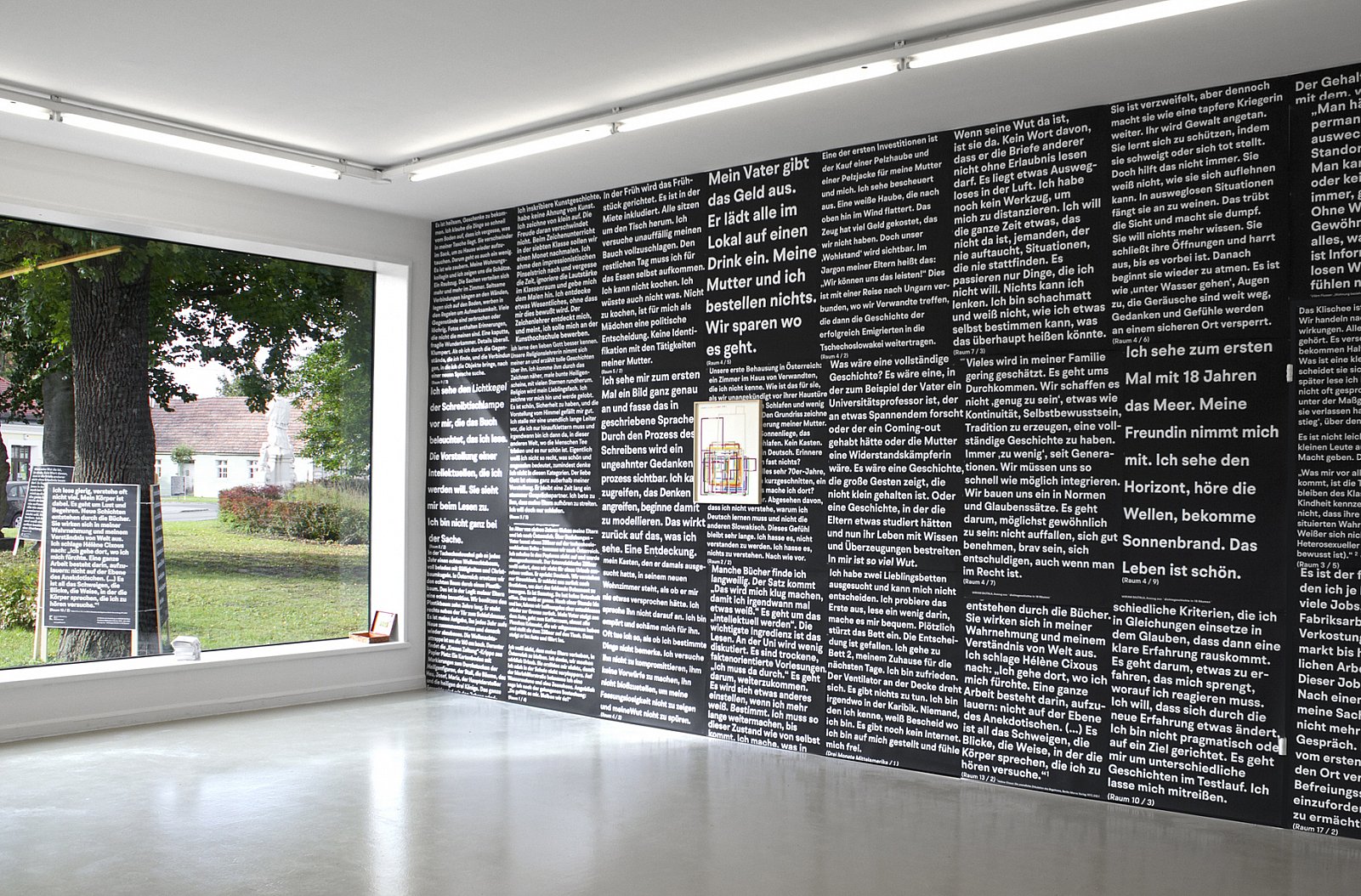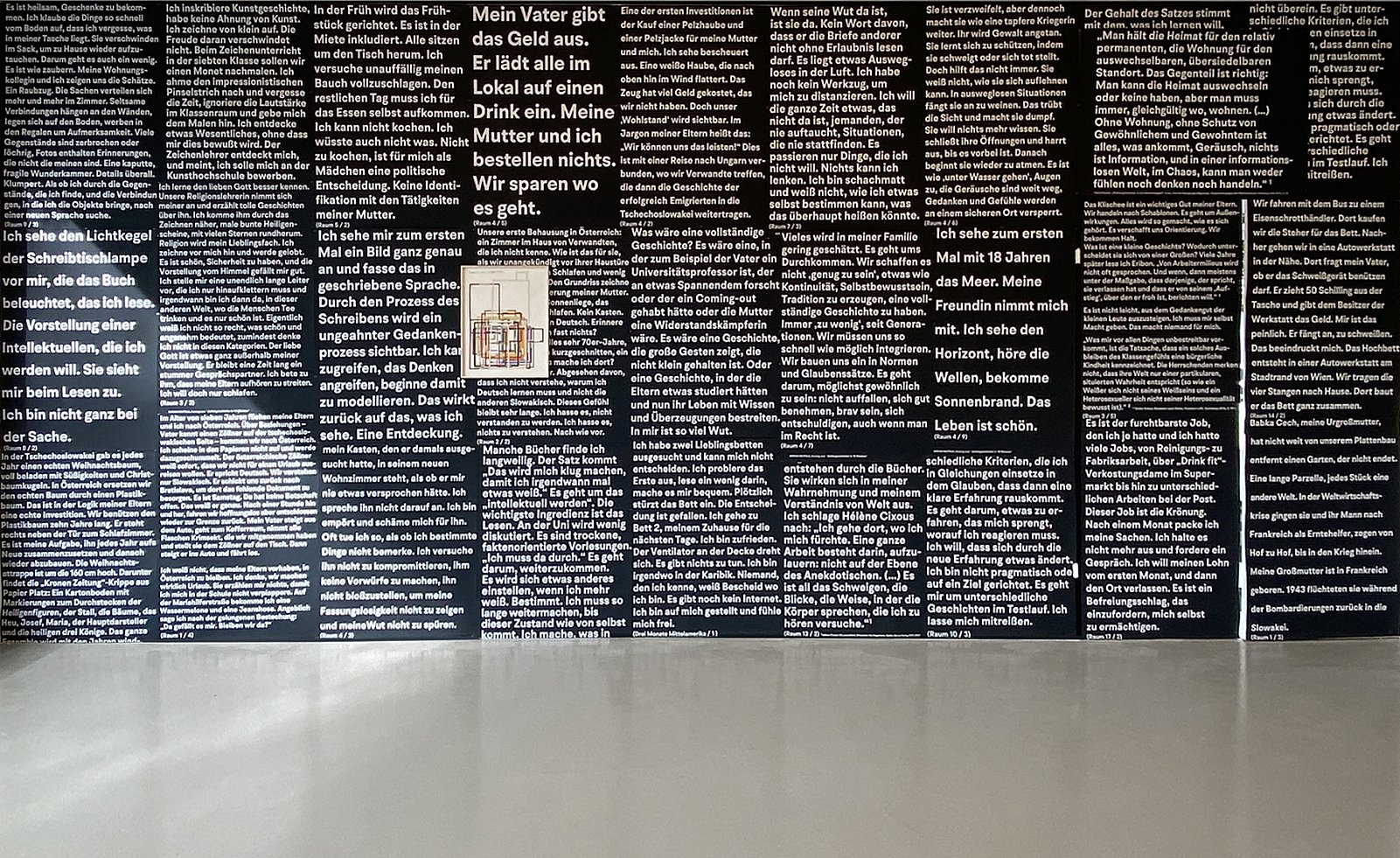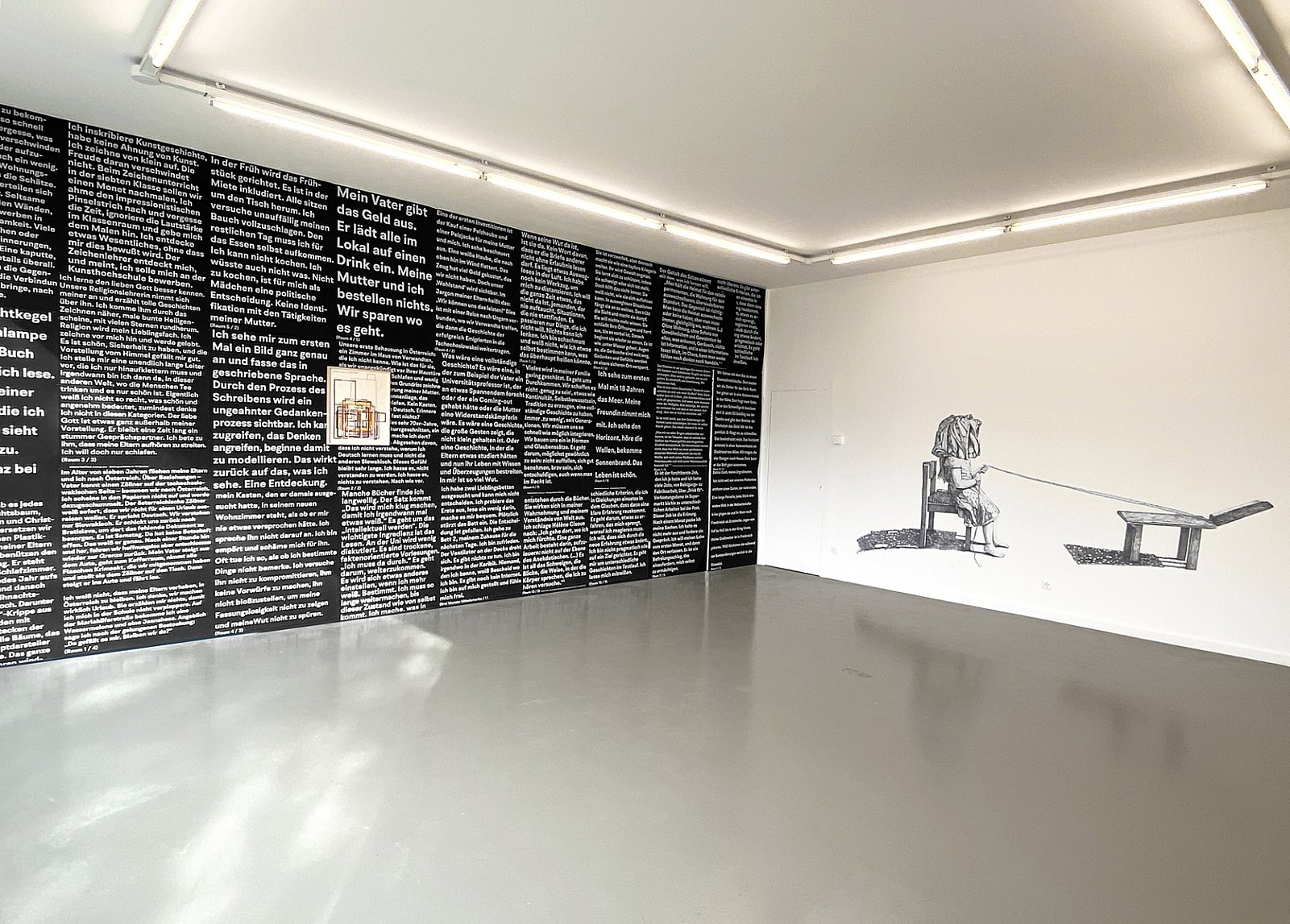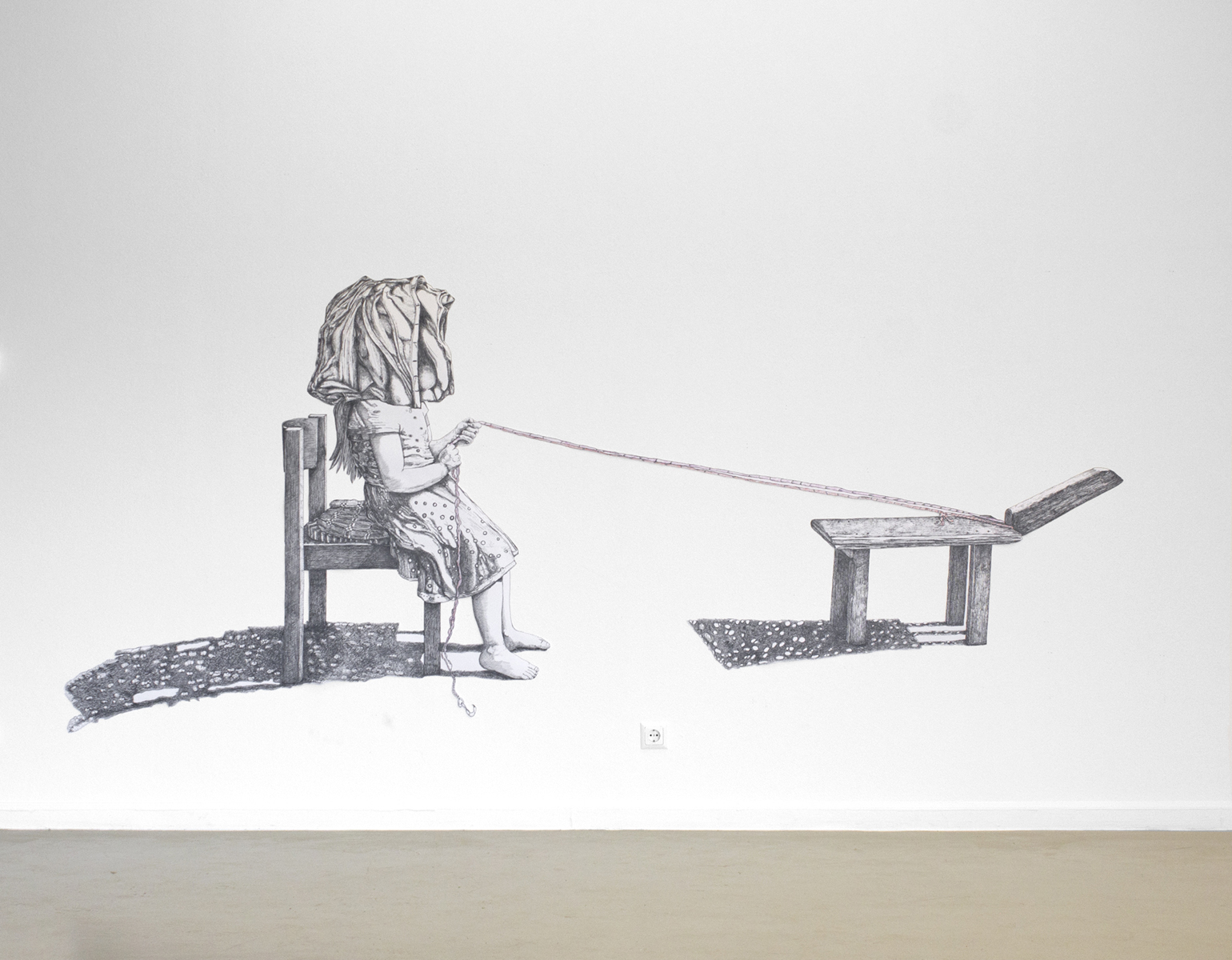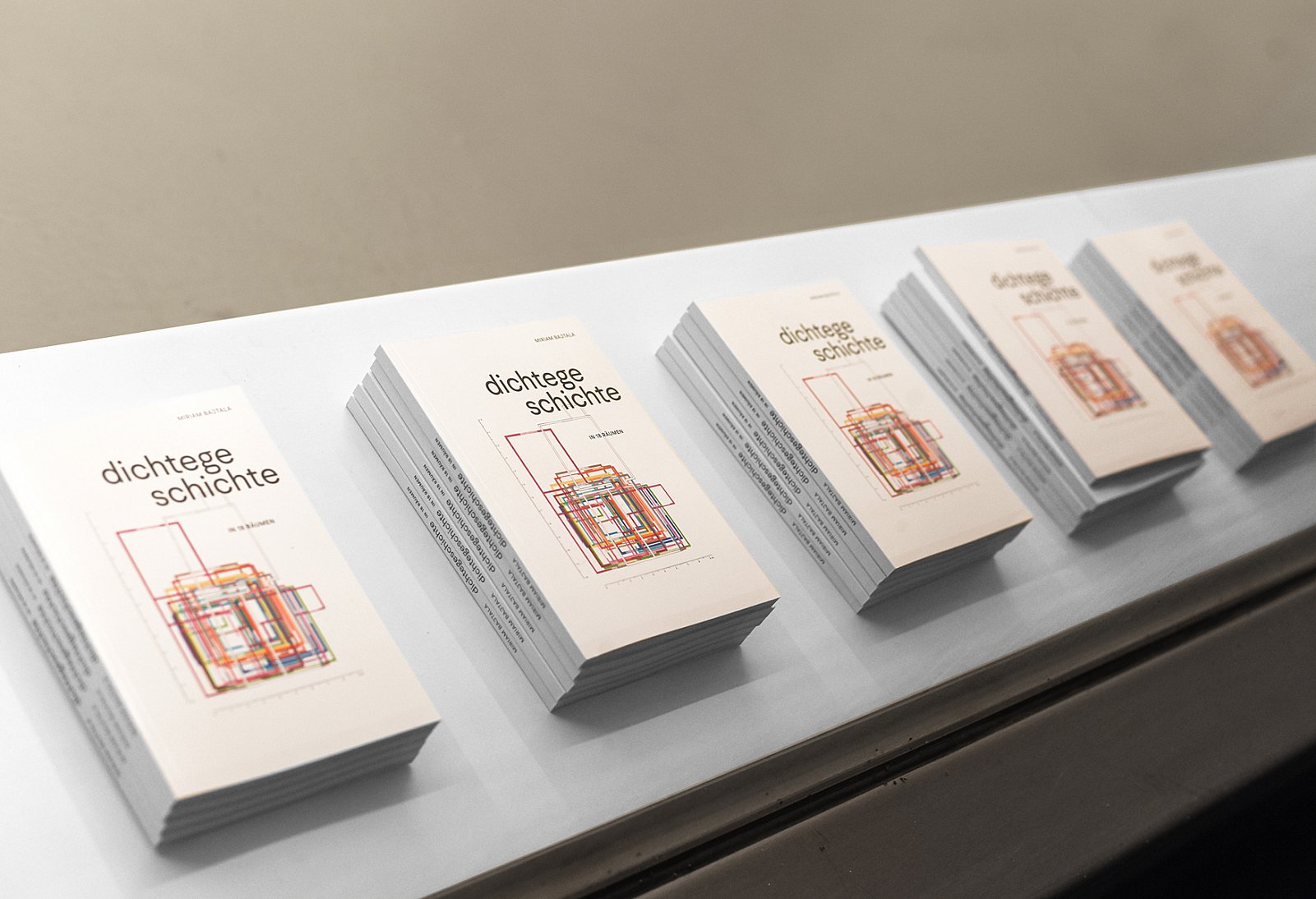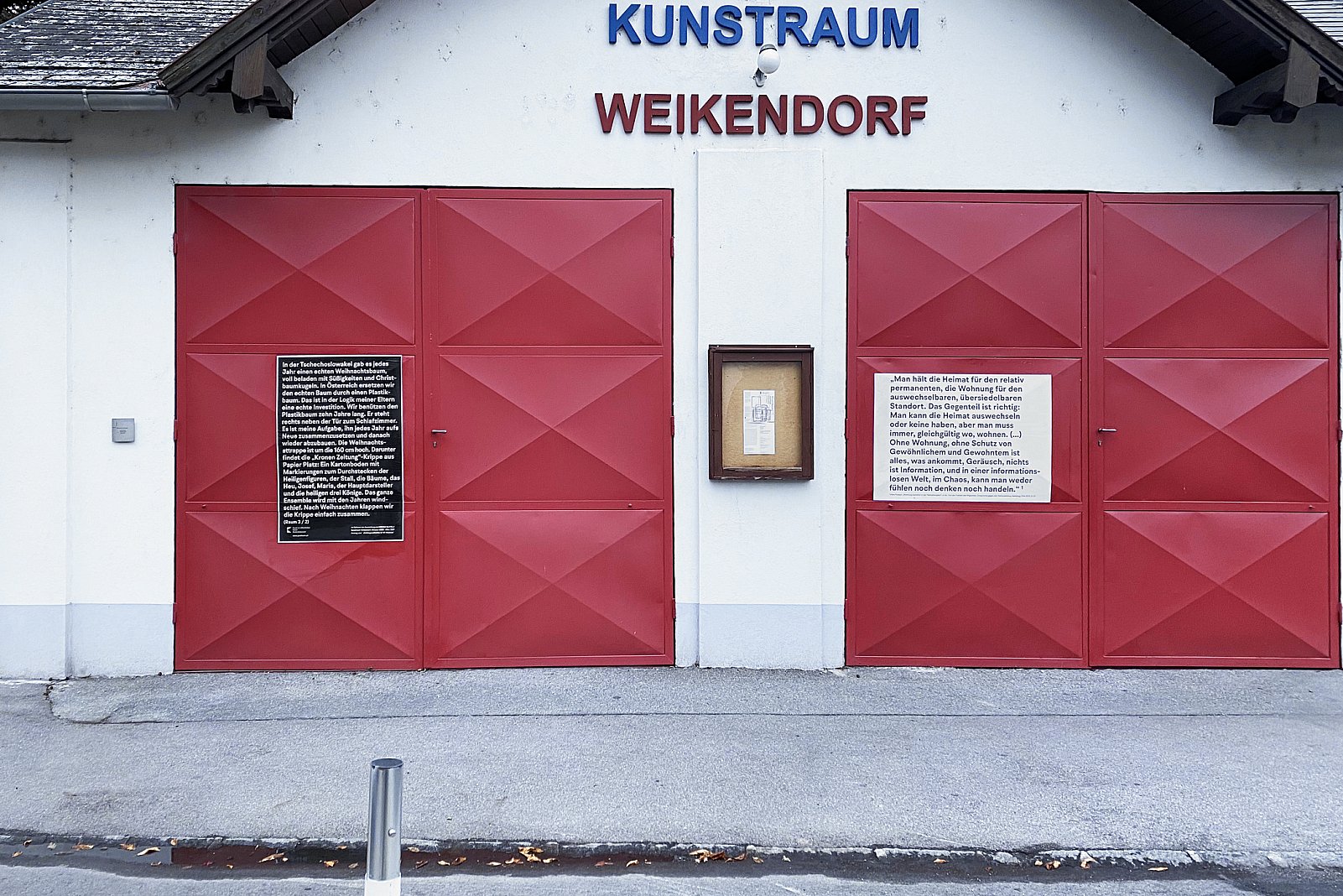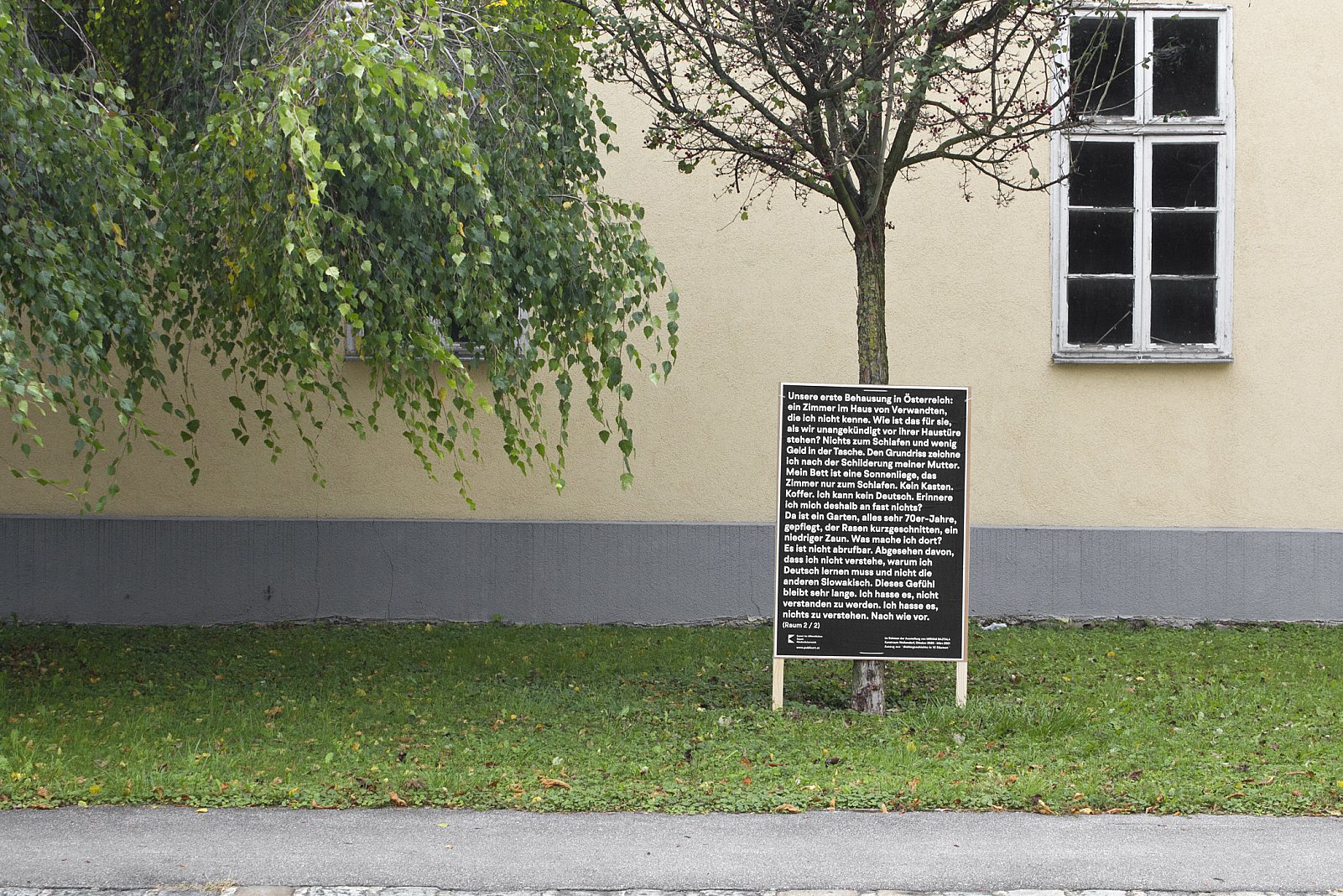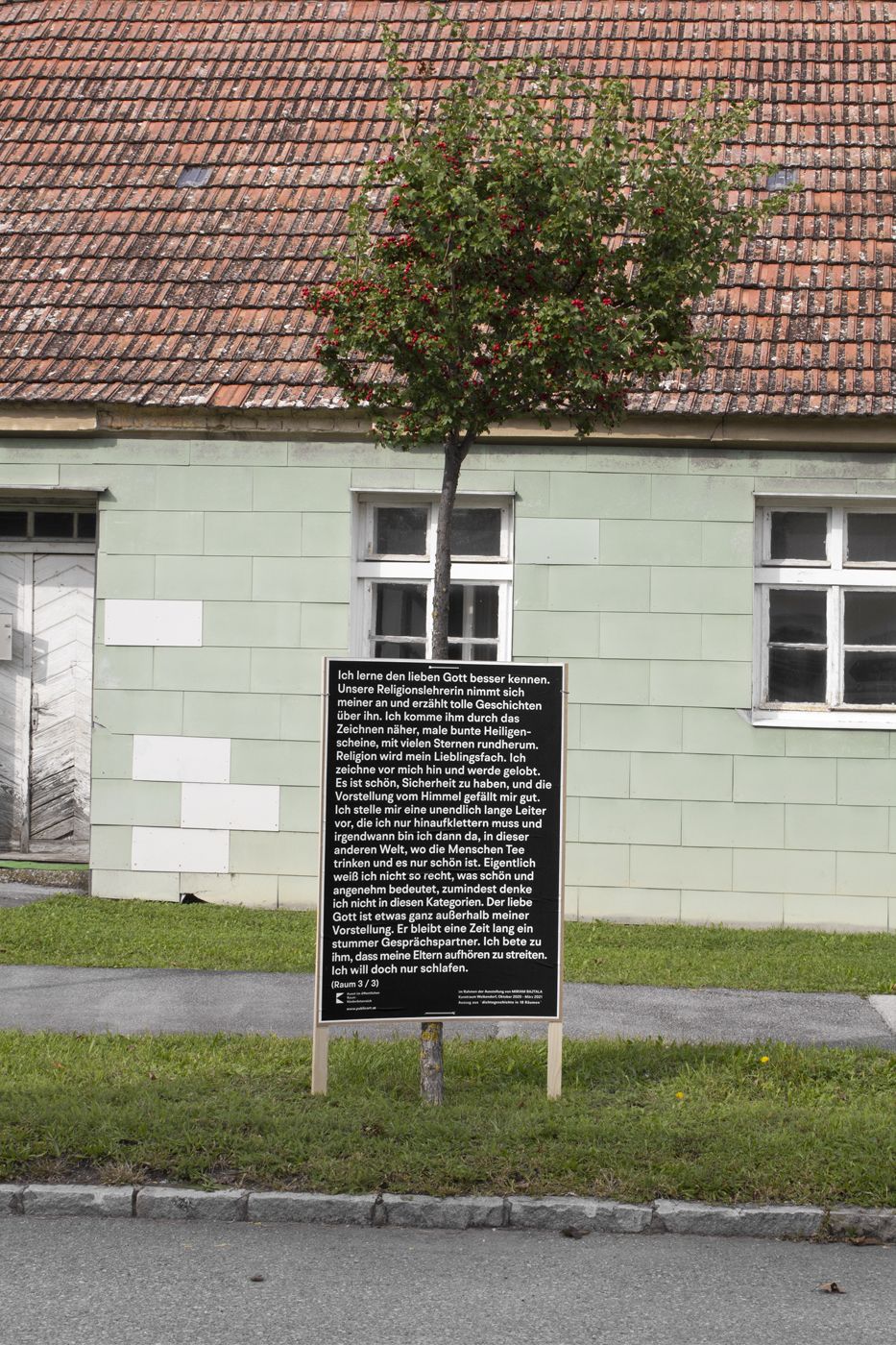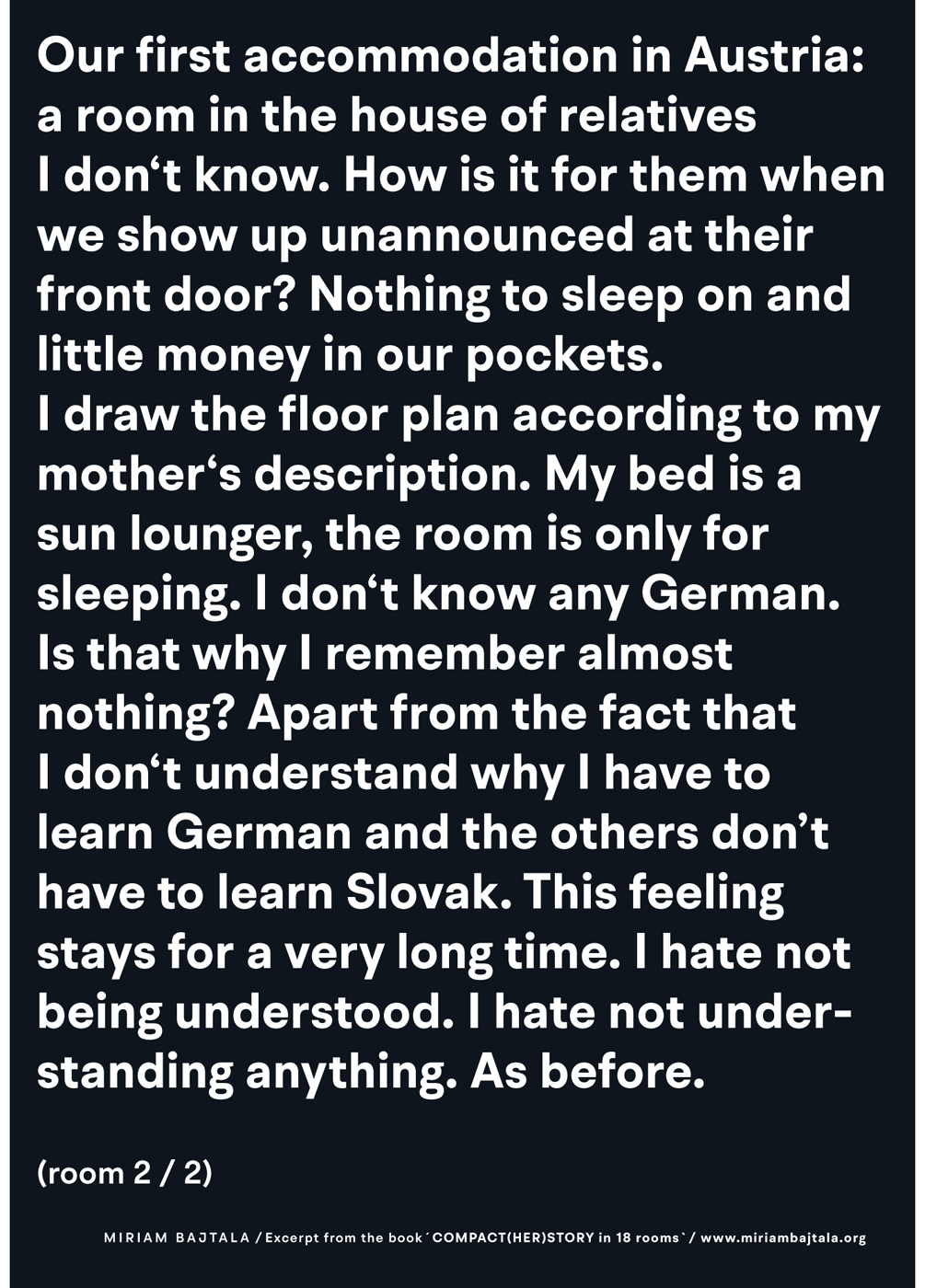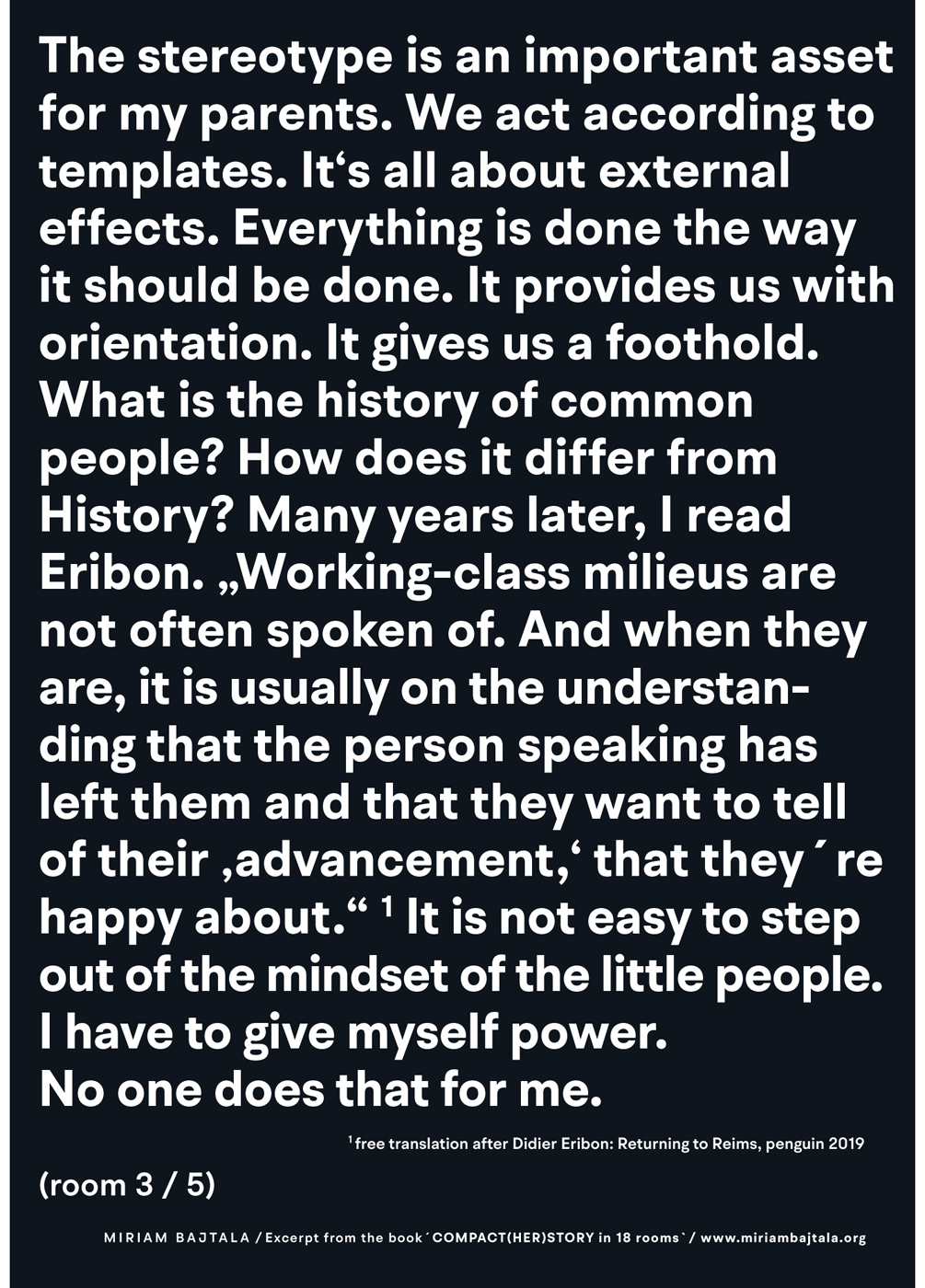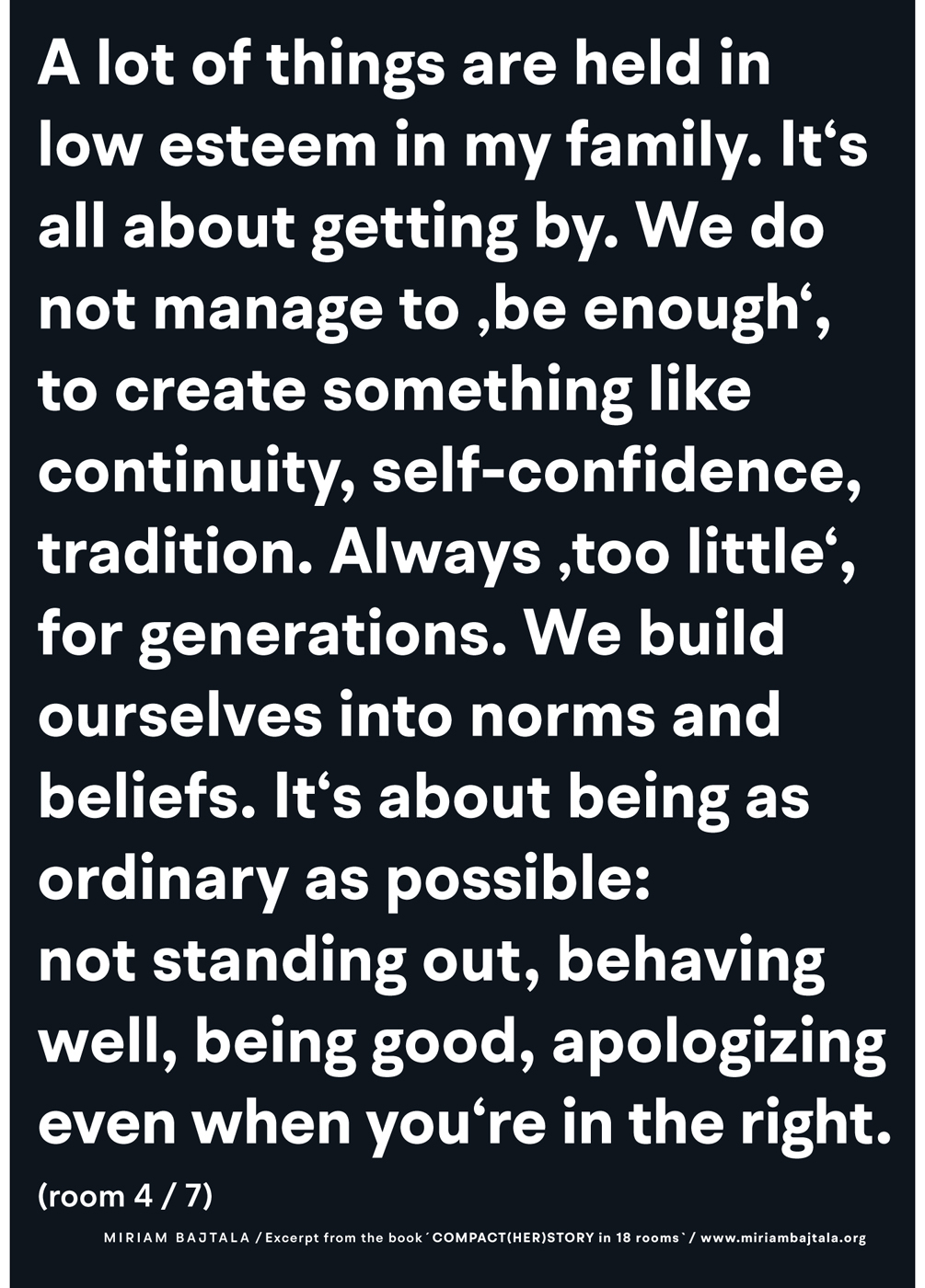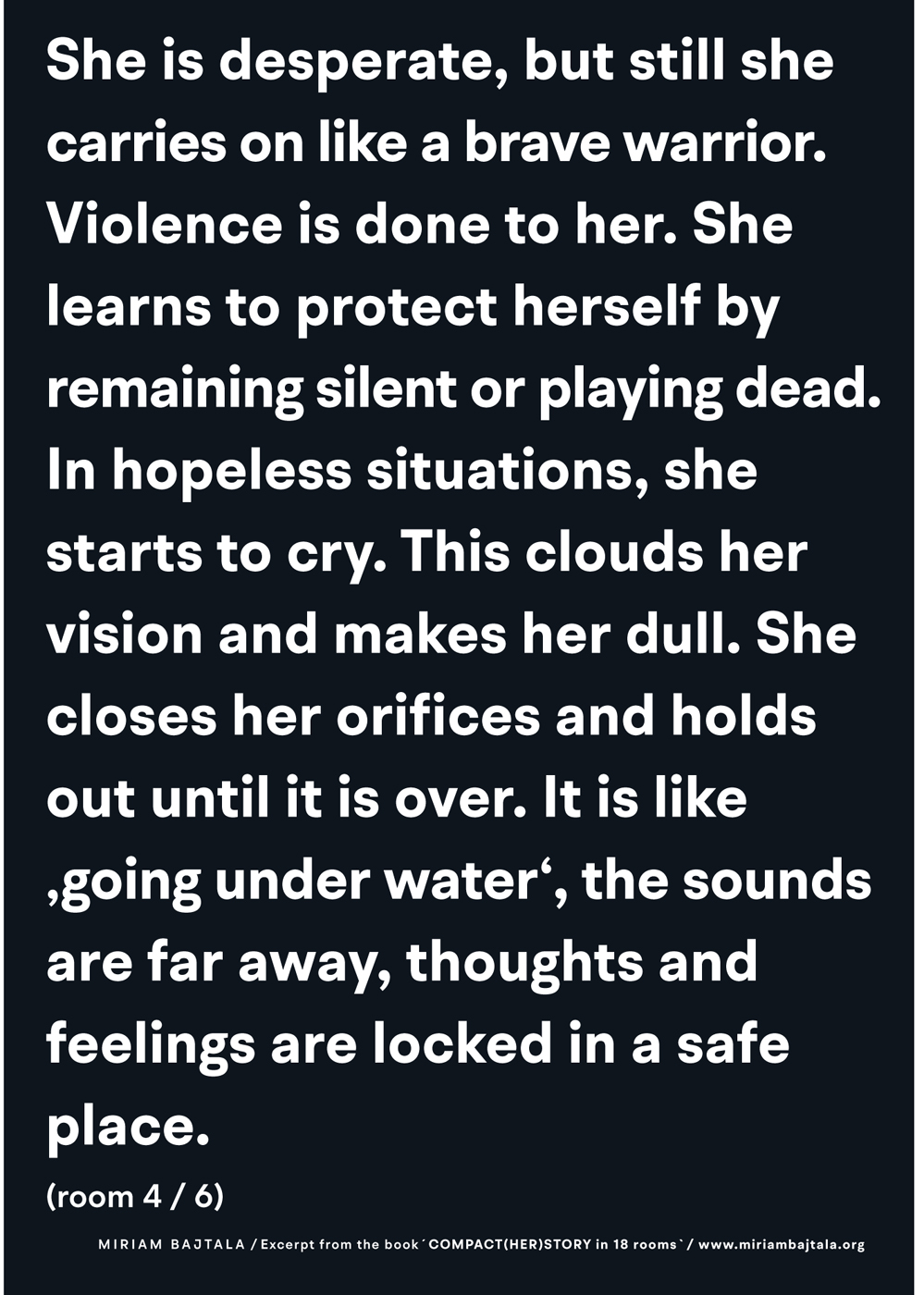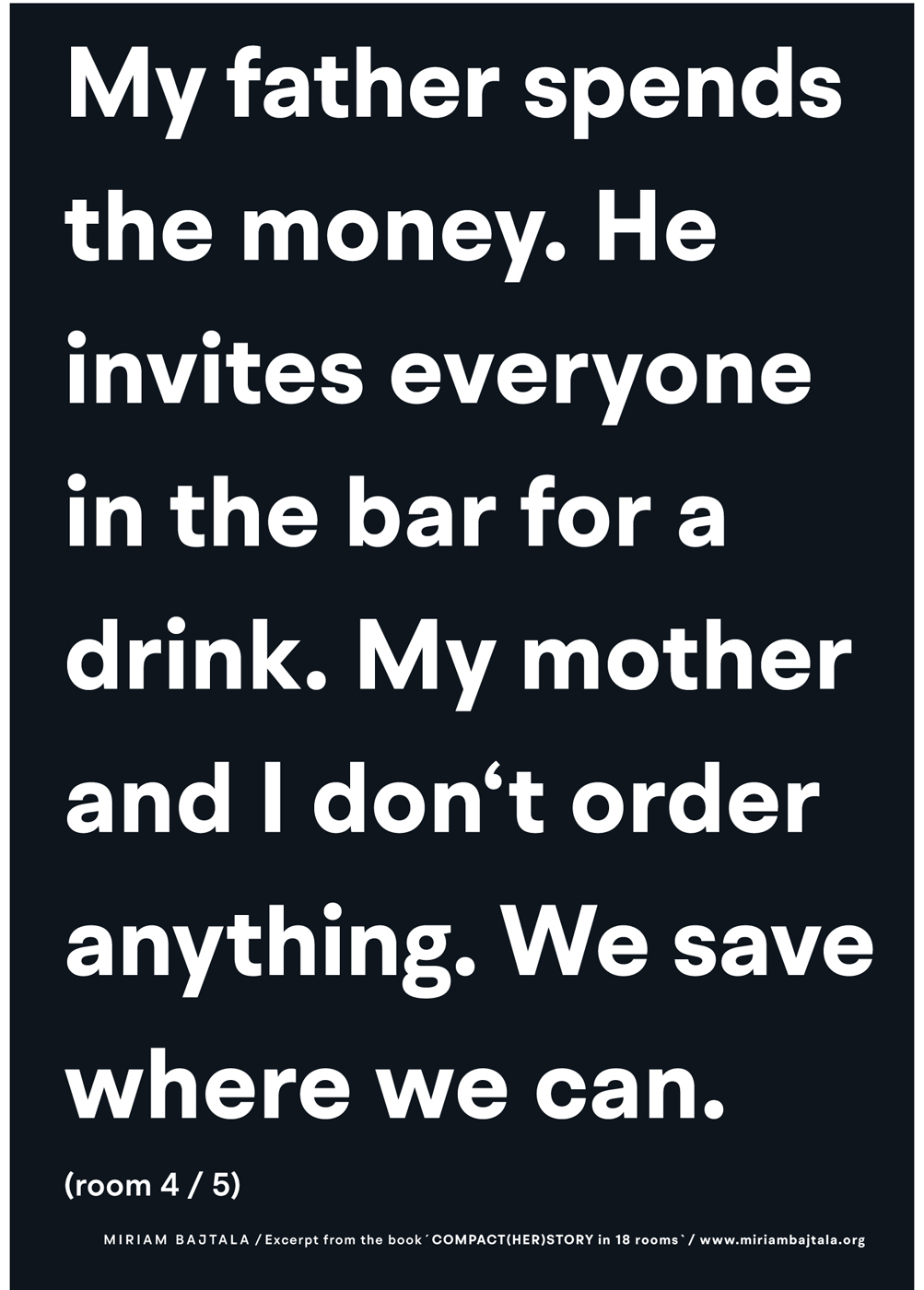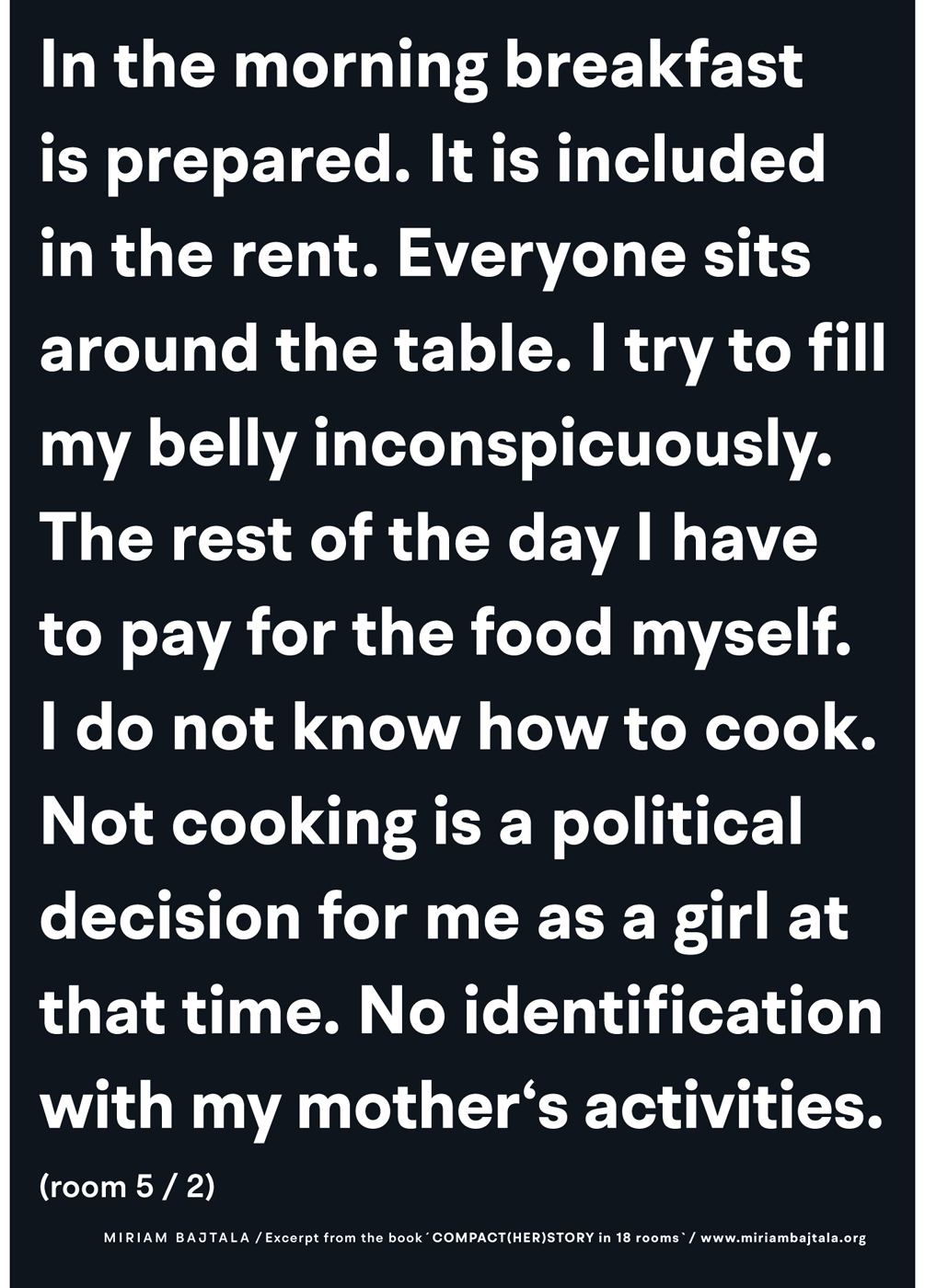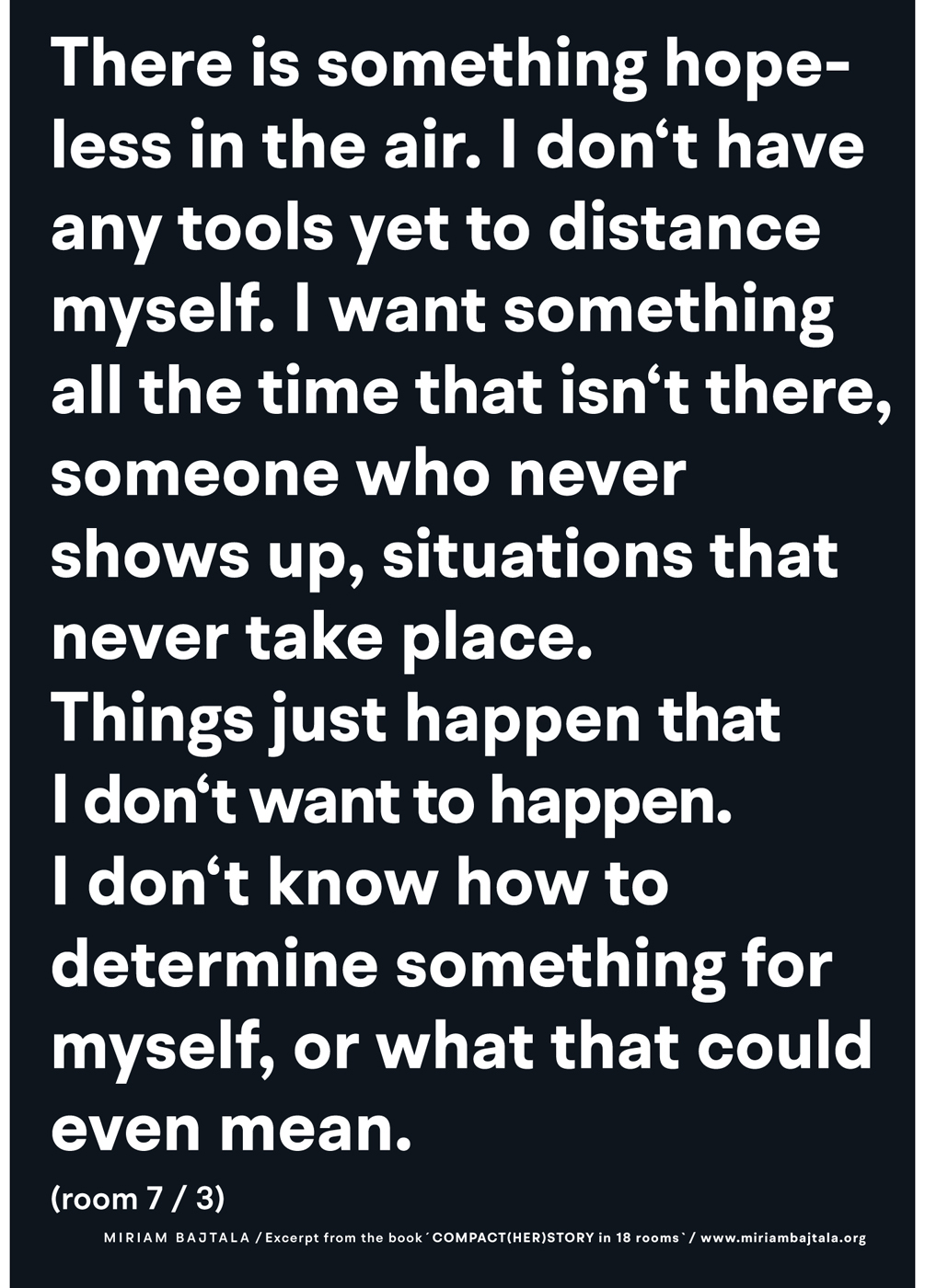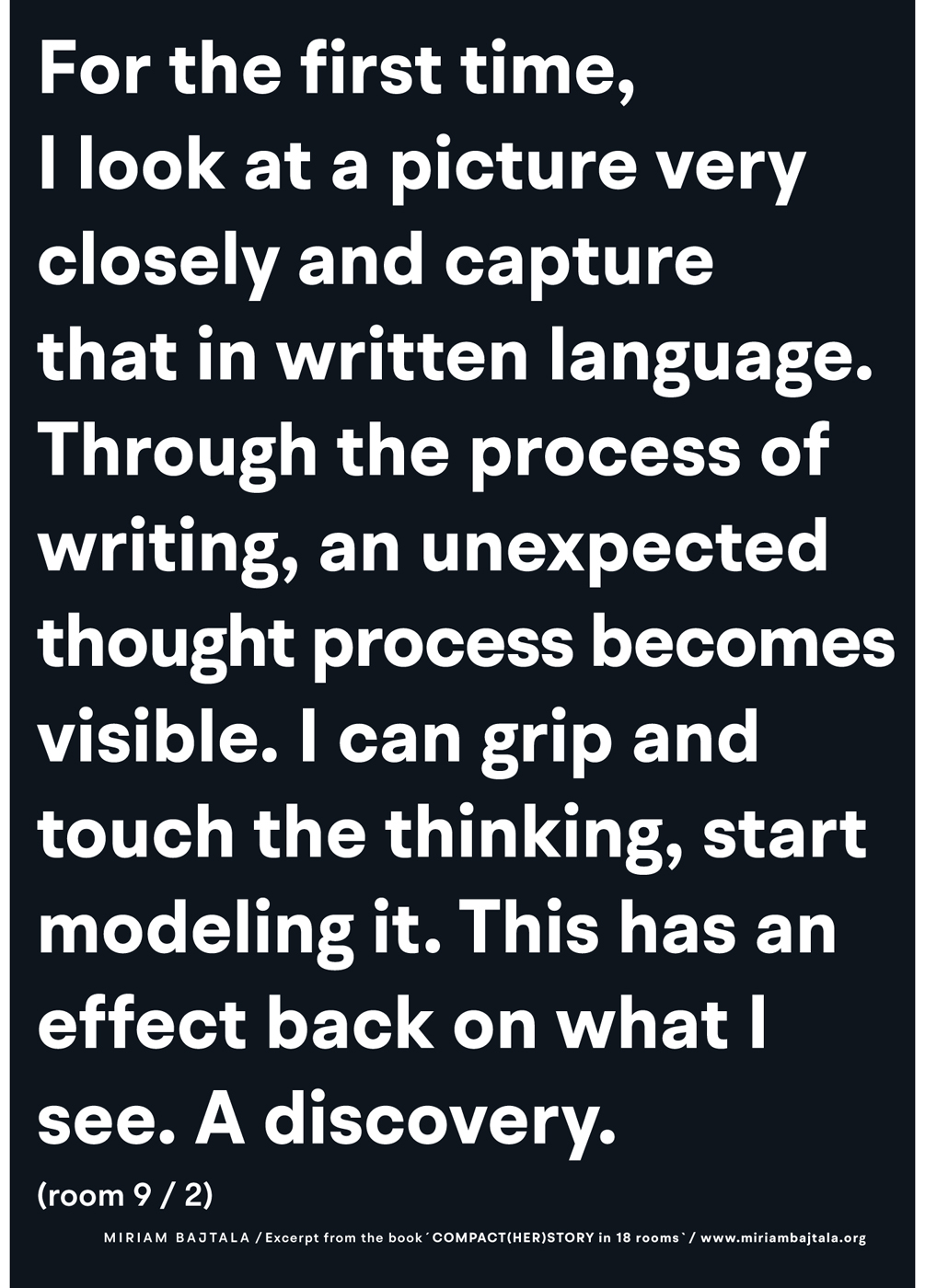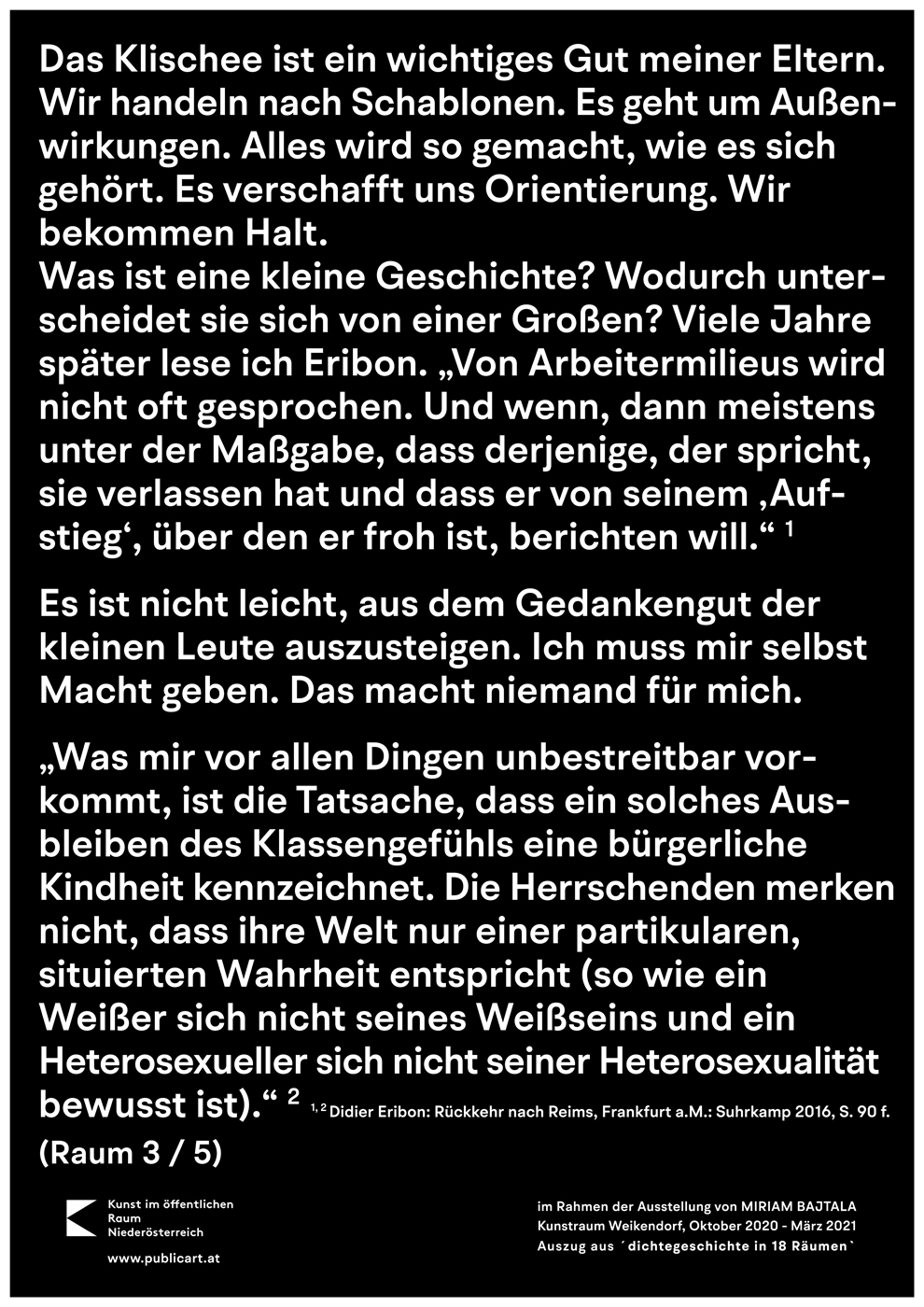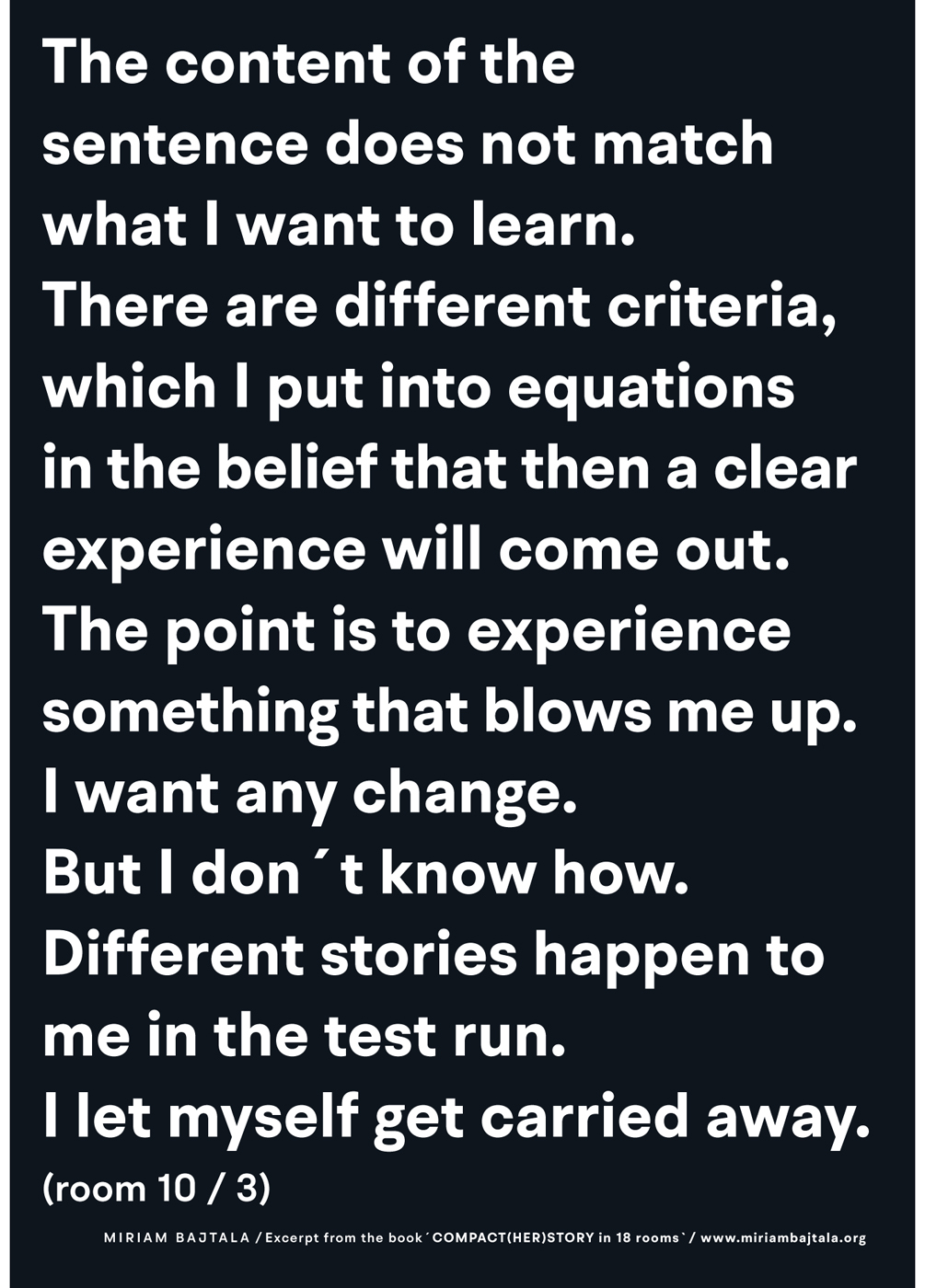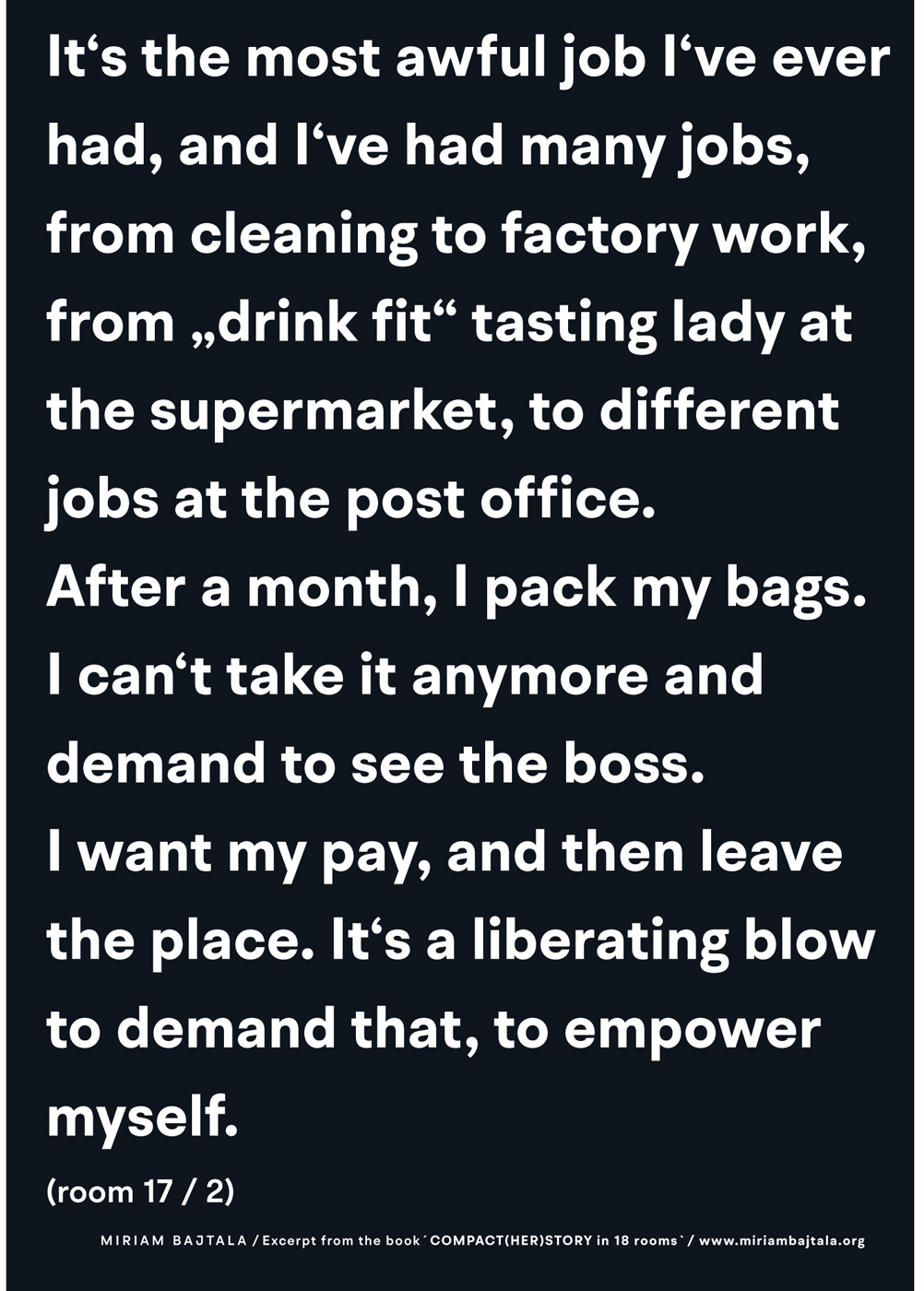COMPACT(HER)STORY in 18 ROOMS
public space / drawings / book
public space / drawings / book
In the exhibition in the artspace Weikendorf, Miriam Bajtala subjects her own past to an experimental act of visualization and actualization. The starting point are reconstructions of the floor plans of the apartments in which the artist lived - a spatial curriculum vitae. On the basis of these graphic templates, she created 18 text miniatures for each apartment, reduced to the essentials. On the one hand, the text raises different sociological questions about social origin, working class, migration, on the other hand, dissociative cracks arise with regard to shame, anger and other feelings.The written ends where her life as an artist begins.
Based on this artistic practice, Bajtala designs different concepts for creating images - spaces of possibility become visible: there is a large-format drawing fragmented over 12 frames, abstracted in bright colors and surfaces, reproducing parts of the room floor plans as overlapping and parallel layers on a scale of 1: 1.
A second drawing shows the picture of a girl playing a carriage ride - all she needs is her imagination.
In a further step, Bajtala links the exhibition space with the neighboring public space. Text excerpts on poster stands, set up around the art space and in the village, give passers-by an immediate glimpse into a memory that is unknown to them.
A living space becomes a place of residence for a certain period of time and a tank or storehouse for memories - memories of the room itself, but above all of one's own relationship to this temporary space-time continuum. The project compact(her)story in 18 rooms focuses less on the publication of a biography than on the fact of being an author of one's own history.
Bajtala's association spaces, in the form of drawings and text, become axes of a field of reflection that stimulate one to trace one's own dense or compact stories between now and remembered now.
An artistic guide to self-empowerment.
Based on this artistic practice, Bajtala designs different concepts for creating images - spaces of possibility become visible: there is a large-format drawing fragmented over 12 frames, abstracted in bright colors and surfaces, reproducing parts of the room floor plans as overlapping and parallel layers on a scale of 1: 1.
A second drawing shows the picture of a girl playing a carriage ride - all she needs is her imagination.
In a further step, Bajtala links the exhibition space with the neighboring public space. Text excerpts on poster stands, set up around the art space and in the village, give passers-by an immediate glimpse into a memory that is unknown to them.
A living space becomes a place of residence for a certain period of time and a tank or storehouse for memories - memories of the room itself, but above all of one's own relationship to this temporary space-time continuum. The project compact(her)story in 18 rooms focuses less on the publication of a biography than on the fact of being an author of one's own history.
Bajtala's association spaces, in the form of drawings and text, become axes of a field of reflection that stimulate one to trace one's own dense or compact stories between now and remembered now.
An artistic guide to self-empowerment.
„Man hält die Heimat für den relativ permanenten, die Wohnung für den auswechselbaren, übersiedelbaren Standort. Das Gegenteil ist richtig: Man kann die Heimat auswechseln oder keine haben, aber man muss immer, gleichgültig wo, wohnen. ... : Ohne Wohnung, ohne Schutz von Gewöhnlichem und Gewohntem ist alles, was ankommt, Geräusch, nichts ist Information, und in einer informationslosen Welt, im Chaos, kann man weder fühlen noch denken noch handeln. (...).“
Vilém Flusser, „Von der Freiheit des Migranten, Einsprüche gegen den Nationalismus, Aufsatz: Wohnung beziehen in der Heimatlosigkeit“, Seite 27, eva-Taschenbuch 254, CEP Europäische Verlagsanstalt, Hamburg 2013.
Vilém Flusser, „Von der Freiheit des Migranten, Einsprüche gegen den Nationalismus, Aufsatz: Wohnung beziehen in der Heimatlosigkeit“, Seite 27, eva-Taschenbuch 254, CEP Europäische Verlagsanstalt, Hamburg 2013.
